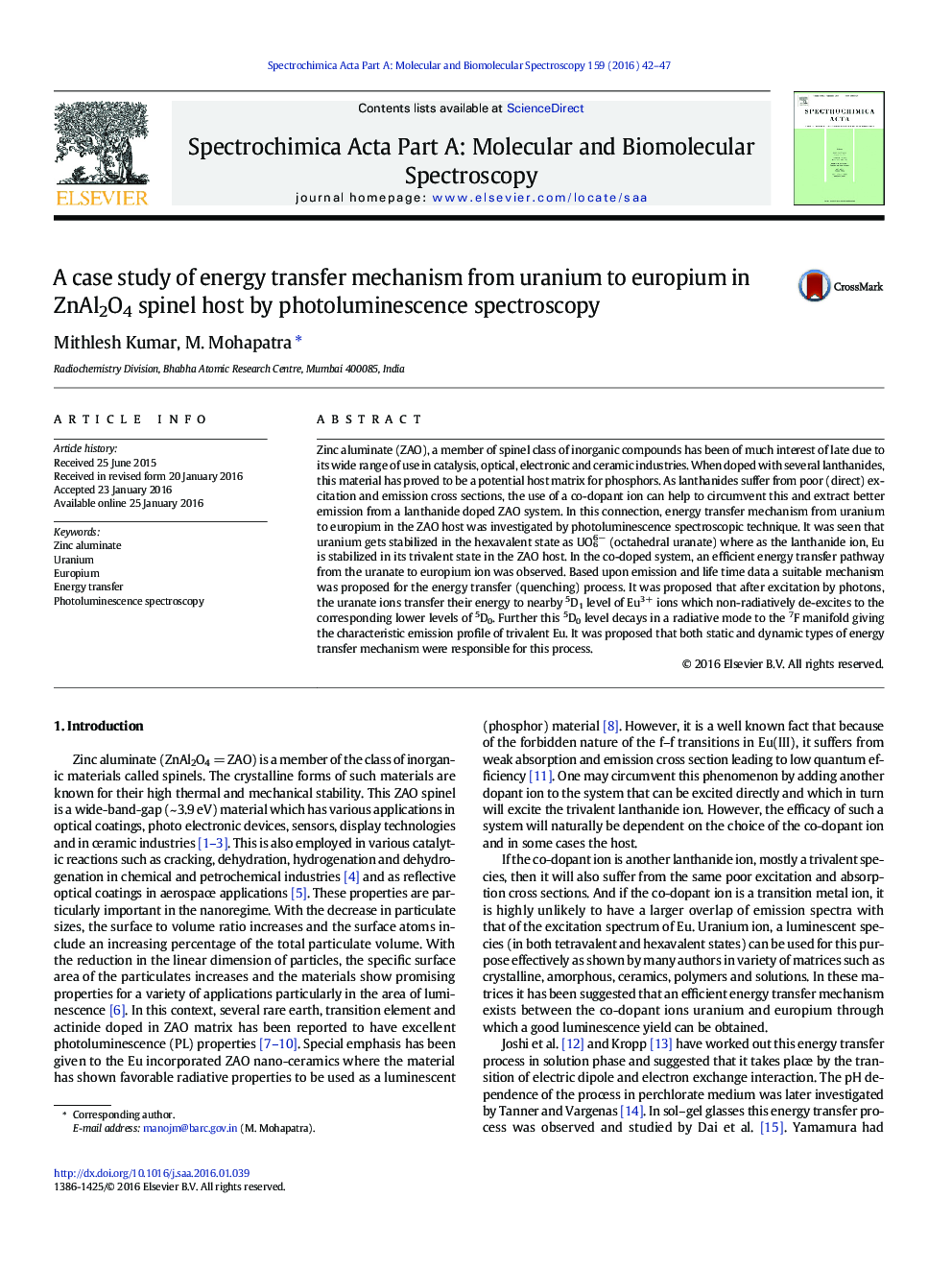| کد مقاله | کد نشریه | سال انتشار | مقاله انگلیسی | نسخه تمام متن |
|---|---|---|---|---|
| 1228915 | 1495210 | 2016 | 6 صفحه PDF | دانلود رایگان |

• Photoluminescence study in the ZnAl2O4 spinel confirmed the stabilization of uranium as UO66- (octahedral uranate).
• In the Eu, U co-doped system, energy transfer from the uranate to europium ion was observed.
• Based upon emission and life time data a suitable mechanism was proposed for the energy transfer (quenching) process.
• The energy transfer process followed a Stern-Volmer mechansim involving static and dynamic quenching (energy transfer).
Zinc aluminate (ZAO), a member of spinel class of inorganic compounds has been of much interest of late due to its wide range of use in catalysis, optical, electronic and ceramic industries. When doped with several lanthanides, this material has proved to be a potential host matrix for phosphors. As lanthanides suffer from poor (direct) excitation and emission cross sections, the use of a co-dopant ion can help to circumvent this and extract better emission from a lanthanide doped ZAO system. In this connection, energy transfer mechanism from uranium to europium in the ZAO host was investigated by photoluminescence spectroscopic technique. It was seen that uranium gets stabilized in the hexavalent state as UO66 − (octahedral uranate) where as the lanthanide ion, Eu is stabilized in its trivalent state in the ZAO host. In the co-doped system, an efficient energy transfer pathway from the uranate to europium ion was observed. Based upon emission and life time data a suitable mechanism was proposed for the energy transfer (quenching) process. It was proposed that after excitation by photons, the uranate ions transfer their energy to nearby 5D1 level of Eu3 + ions which non-radiatively de-excites to the corresponding lower levels of 5D0. Further this 5D0 level decays in a radiative mode to the 7F manifold giving the characteristic emission profile of trivalent Eu. It was proposed that both static and dynamic types of energy transfer mechanism were responsible for this process.
Figure optionsDownload as PowerPoint slide
Journal: Spectrochimica Acta Part A: Molecular and Biomolecular Spectroscopy - Volume 159, 15 April 2016, Pages 42–47